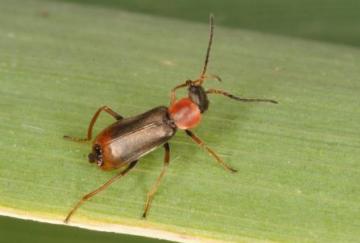Species Account for Cerapheles terminatus
PLEASE NOTE, many records in this group are not yet available
Cerapheles terminatus (Menetries, 1832)
Coleoptera: Melyridae

Reproduction for study and non-profit use permitted, all other rights reserved.
Taxonomic group: beetles (Coleoptera) - Available county data
View time series maps for Cerapheles terminatus
member log-on for taxon report
Status: NR
Images
upload a new image
Species text
This is a small very local soldier beetle with a scattered distribution in southern England ranging to South Wales. This is the first record for Essex, and apparently the nearest records are from the fens in East Anglia (P.Hammond, pers. comm.). Hyman & Parsons (1992) state that there are 1970-onwards records are for Dorset, East Norfolk, Cambridgeshire, Huntingdonshire and Glamorgan. The beetle is found in fens, saltmarshes and other wetland habitats, where adults can be swept from vegetation, particularly flowers. At Wat Tyler Country Park one individual was collected within the fleet reedbed in litter at ground layer, but it may have been knocked off higher up the reeds. Management recommendations in Hyman & Parsons (op.cit.) include the need for water tables to be maintained at high levels; on fenland sites grazing or (rotational) cutting is needed to maintain open conditions; on saltmarshes, grazing should not be introduced on sites where there is no grazing at present. References
Habitats
Recorded management for locations with Cerapheles terminatus
Recorded substrate and hydrology for locations with Cerapheles terminatus
Why not join the Club, register and add a new species page
Interpretation of distribution maps


























